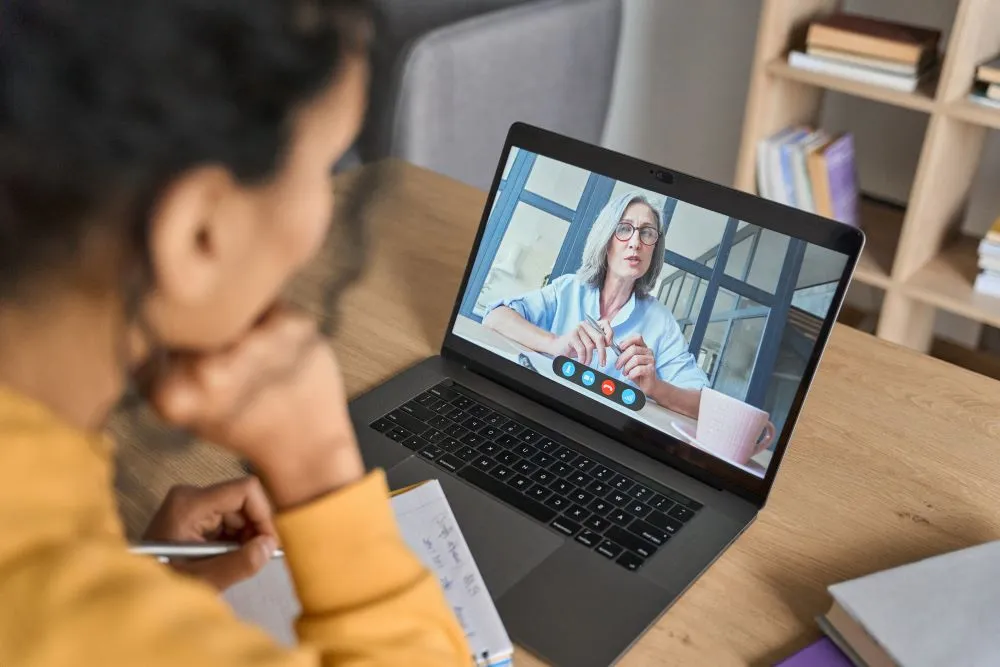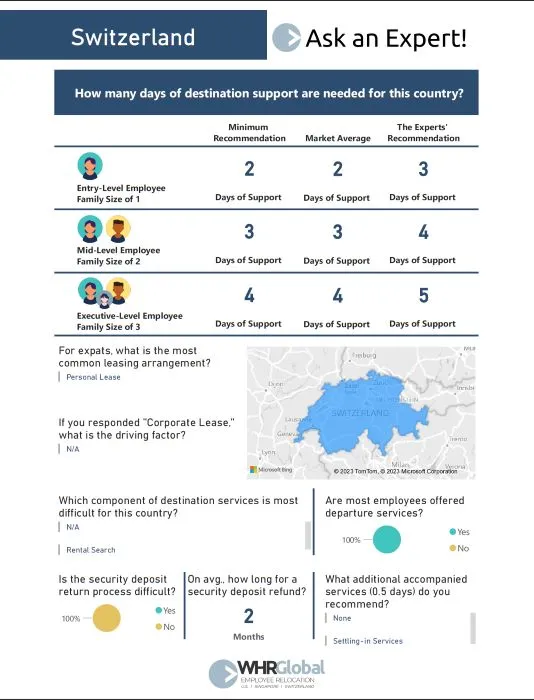
あなたの組織では、グローバルモビリティと人材獲得の関係者を戦略的に調整できていますか?あるいは、異なる優先順位や理解でチームがサイロ化されていると感じていますか?ハネウェルとゼネラル・エレクトリックでグローバル・モビリティと移民を主導したGMSのレダ・ベラベッドとWHRグローバルの戦略イニシアチブ・マネージャーのショーン・スランの洞察を含め、グローバル・モビリティと人材獲得チームを調整する6つの方法を以下でご覧ください。
グローバルモビリティチームと人材獲得チームが同じ目標に向かって働いていないと感じているのは、あなただけではありません!幸いなことに、人材流動性を改善し、これらの利害関係者が結束力のあるチームとして働くようにするために、常識的なステップがいくつかあります。
グローバル・モビリティ・チームと人材獲得チームが連携していれば、専門性の高い従業員を迅速かつコンプライアンスに則って採用することができます。
1.中核拠点のグローバルモビリティチームと人材獲得チームに「ハウツー」リロケーションガイドを配布する。
人材獲得チームとグローバルモビリティチームに「How To」ガイドを配布する。このガイドには、移民、税金、推奨されるリロケーションサポートなど、企業の中核拠点について知っておかなければならないミッションクリティカルな事柄が記載されているはずです。 例えば、以下のようなものです:
-
-
- 御社はオランダのグローバル・センター・オブ・エクセレンスで働く役員を定期的に雇用しています。貴社のチームはオランダの 30%裁定を申請していますか?貴社の人材獲得チームは、内定を提示する前に、各応募者が 30%ルールの要件を満たしていることを確認する責任を負っていますか?例えば、人材獲得担当者は、候補者が特定の専門知識を持っていること、オランダ国境から 150 km 以上離れた場所で採用されること、などを確認する必要があります。
- あなたの人材獲得チームは、企業内転勤のためのL-1ビザや 専門職種のためのH-1Bビザなど、米国のビザの種類に精通していますか?人材獲得チームは、外国人人材の獲得を試みる前に、各ビザの基本要件を知っておく必要があります。
- RMCは、中核拠点に必要な国別リロケーションサポートのレベルを積極的に導くべきです。例えば、この2023年デスティネーション・サービス・ベンチマーク・レポートでは、国、家族の人数、従業員のレベル別に、デスティネーション・サポートの最低レベル、平均レベル、推奨レベルを示しています。また、個人向けリースか法人向けリースか、保証金の返還にかかる期間、最も困難な構成要素も示しています。
-
2.Time-To-Fill などの人材獲得指標を見直す。
残念ながら、TA(人材獲得)はポジションの量や質だけでなく、TTF(Time-To-Fill)でも評価され、組織のニーズや候補者の経験、コンプライアンスという厳しい現実との間に決定的なギャップが生じることが少なくありません。
私は、法律で認められている場合、「移民採用可能性」と名付けた部門横断的な事前評価プロセスを導入しました。このプロセスを適用したところ、2つの部門間のパートナーシップを高めることができ(最終的に「不良雇用」のリスクを軽減することができた)、非常に満足しています。 また、データ・プライバシー規制や公正雇用慣行が導入のハードルになっているところもあるようです。労使協議会など、労働と雇用に関する柔軟性はあまりなく、本当に大変でした。
このような場合、私たちは、採用担当者に対し、「何を注意すべきか、どのようにレッドフラッグを見分けるか」というトレーニングや教育セッションを繰り返し行い、コミュニケーション戦略全般(オファーまで)を見直すことで、すべての関係者が、移民のステータスやスポンサーの要件、責任(コスト、スケジュール、移民のライフサイクル、人材管理戦略など)を持つ候補者の採用に潜むリスクをより理解できるように努めています。
候補者の満足度100%、TTF指標の改善、入社前のイミグレーション・コンプライアンス評価の満足度など、コラボレーションとパートナーシップのレベルに満足していると言えるまでには、まだ長い道のりがありますね。
3.合格率アップのための合格前チェックポイントの実施
前述したように、モビリティ・プログラムは、さまざまな受け入れ前のチェックポイントを実施することで、任務の受け入れ率と成功率を大幅に向上させることができる。
-
-
- 信頼できる税理士事務所のサービスを利用する。赴任者への国別ブリーフィングに加え、人材獲得チームに貴重なガイダンスを提供することができます。最低限、人材獲得チームが税務支援、均等化、合計化協定の概念に精通していることを確認す る。すべての外国人応募者に対して、赴任前タックス・ブリーフィングを実施する。
- 国別の税務説明会については、誤解があれば移転や赴任が失敗するリスクが大きくなるため、応募者はポジションを引き受ける前に選択肢を把握しておく必要があります。赴任者(特にエグゼクティブやディレクタークラスの役職に就く者)は、株式、ストックオプション、債券、不動産、金などの貴金属など、複雑な投資ポートフォリオを持っている場合があります。従業員の選択肢は、勤務地、市民権、リロケーションの種類(永久転勤、長期赴任、短期赴任、通勤、出張)によって大きく異なります。
- 上記のステップ2で述べたように、法律が許す限り、独自の部門横断的な事前評価プロセス(別名、移民採用可能性ガイド)を構築しましょう。しかし、レダ・ベラベド氏がさらに詳しく述べているように、米国や欧州連合(EU)のような難易度の高い司法管轄区を認識する必要があります:
-
米国のように「スポンサーシップを必要とするか、将来的に必要とするか」という質問に限定できる国や、EU諸国のように個人情報/データを要求することがPIIとみなされ、公正な雇用慣行/採用時の差別の妨げになる可能性がある国。中東(特にGCC)のような地域は、こうした評価に対してよりオープンです。
外国人労働者の受け入れに長い歴史を持つ当局は、スポンサーシップの要件に基づく雇用可能性チェックを許可/推進する傾向がありますが、「クォータ制」の観点から透明性を高めることも提唱しています。国籍枠を容認するわけではありませんが、透明性を確保することで、オファー段階まで候補者と関わってから不可能であることが判明するのではなく、実現可能性を事前に判断することができます。組織的な観点からも、このプロセスは非常に透明で合理的です。
4.リロケーション・マネジメント会社(RMC)を通じた事前決定コール
グローバル・モビリティ・チームとRMCは、事前決定コールを実施することもできます。リロケーション・マネジメントでは、候補者が受け取るリロケーション・パッケージを確実に理解できるよう、事前決定コールを実施します。また、RMCが御社の会社や福利厚生をアピールし、従業員やご家族の不安を解消する機会にもなります。
決定前の電話連絡は、従業員がオファーを受け入れ、赴任手続きを開始した後の食い違いや誤解も防ぎます。例えば、事前決定電話の後、従業員はどのパッケージを受け取るのか、各移転手当はいくらになるのかなどを正確に知ることができます。しばしば、人材獲得や人事ビジネスパートナーが提示した移転パッケージと、RMCが実施する移転パッケージの間に食い違いが生じることがあります。これは、人為的なミスや、誰かが古い/古いポリシーに基づいて運用していることが原因かもしれません。このような不一致は、RMCが次のような場合に最小限に抑えることができます。 決定前にリロケーション・パッケージについて説明し、受け入れ後にリロケーション・パッケージを実施する。.

5.人材の流動性を最大限に高めるためのHRISの最適化
組織は、HRIS(人事情報システム)にカスタムフィールド、オブジェクト、レポートを作成することで、人材の流動性を最大限に高めることができます。例えば、ADPでは、オープンポジションのために転勤を希望する応募者の人材プールを構築し、管理することができます。しかし、企業内転勤を希望する既存の従業員を見逃してはならない。既存の従業員は、御社の製品、サービス、期待を理解しているはずであり、雇用やトレーニングのコストを削減することができる。
SHRMのベンチマークによると、エグゼクティブの平均採用コストは28,329米ドルです。しかし、多くの雇用主は、新入社員の雇用にかかる総コストは、そのポジションの給与の3~4倍になると見積もっている。これは、リクルーターなどのハードコストと、部門リーダーやマネージャーが採用やトレーニングのプロセスをサポートするのに要する時間などのソフトコストの組み合わせである。
ゼロから新しい候補者を探すのではなく、カスタムフィールドやオブジェクトの追加、HRISシステムへのレポート作成についてIT部門に相談してみましょう。そうすれば、既存の従業員は人事プロファイルで、新しいポジションのために転居する意思があるかどうかを示すことができます。また、カスタムレポート内にフィルターを追加することで、HRISにすでにロードされている過去の業績評価と組み合わせて、転勤の意思のある高業績社員に人材を絞り込むこともできます。

6.人材獲得チームとの定期的なトレーニングセッションの実施
定期的なトレーニングセッションを実施することで、人材獲得チームが同じシステム、リソース、候補者から頻繁に寄せられる質問への回答を、採用前と採用後に利用できるようになります。トレーニングセッションはまた、新しい人材獲得チームメンバーに、従業員が受けているモビリティパッケージについて詳しく学ぶ機会を提供し、すべての人材獲得チームが同じ標準化されたプロセスに従うべきだというメッセージを強化します。
リロケーションマネジメント会社は、人材の流動性を高めるために、人材獲得チームや関連するステークホルダーとのトレーニングセッションを定期的にアレンジしています。これらのトレーニングセッションには、以下のようなものがあります:
-
-
- モビリティ、TA、人事の各チームを対象とした、リロケーション・マネジメント会社によるオンサイト・トレーニング・セッションです。モビリティプログラムの規模によっては、RMCがこれらのトレーニングセッションを無料で実施したり、ホテル代や旅費の負担を企業に要請したりすることもあります(距離や期間によって異なります)。
- RMCによるバーチャルウェビナー形式のトレーニングセッション。
- お客様の組織の重要な拠点や、独自の困難を抱える拠点に対して、国や地域に特化したトレーニングを提供します。
- デスティネーション・サービス・プロバイダー(DSP)およびレンタル・エージェントから、市場の最新情報、文化的規範、ベストプラクティスについて洞察を得る。
- レッドフラッグ、ノルマ、見積もりスケジュール、最低給与、労働市場テストの必要性など、移民会社からのガイダンス。
-
私たちは、人材獲得リーダーを対象とした定期的なトレーニングセッションを実施することで、地域ごとの構造を一元化したグローバルモビリティプログラムに移行することに大きな成功を収めました。このトレーニングでは、主にジャーニーマップやプロセスにおける重要な考慮事項について学びます。モビリティのメリットや望ましい成果に関する議論に地域のTA関係者を積極的に参加させることで、標準化されたプロセスを採用する意欲が顕著に高まっていることが確認されました。
結論として、グローバルモビリティチームとタレントアクイジションチームを連携させることは、効率的な採用とタレントモビリティの成功を確保するために組織にとって極めて重要である。リロケーションガイドの配布、人材獲得メトリクスの見直し、受け入れ前チェックポイントの実施、事前決定コールの実施、HRISシステムの最適化、定期的なトレーニングセッションの実施などにより、組織はコラボレーションを促進し、これらのチームの有効性を高めることができる。このような連携により、専門性の高い従業員の迅速かつコンプライアンスに則った採用が可能となり、リスクの軽減、採用までの時間の短縮、そして最終的には候補者の満足度と入国管理局のコンプライアンスが向上する。これらのチームの連携に向けた努力と投資を継続することで、人材獲得プロセスがより合理化され、成功につながるでしょう。

